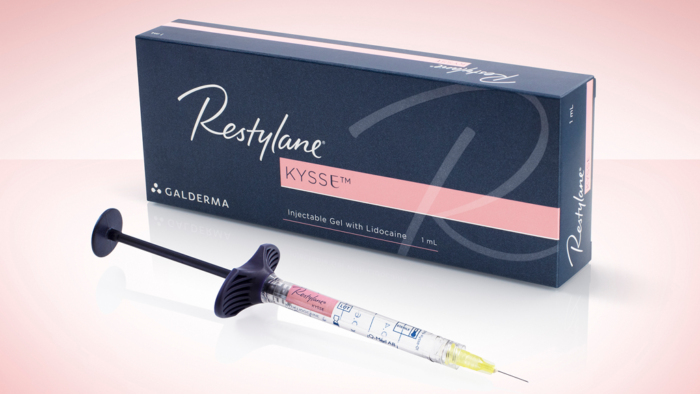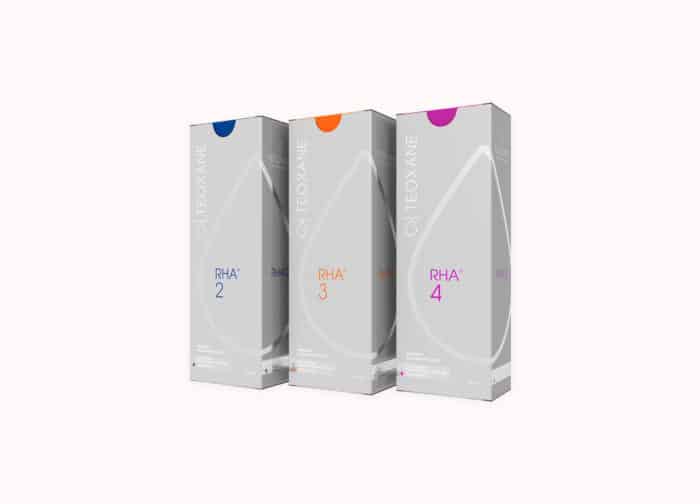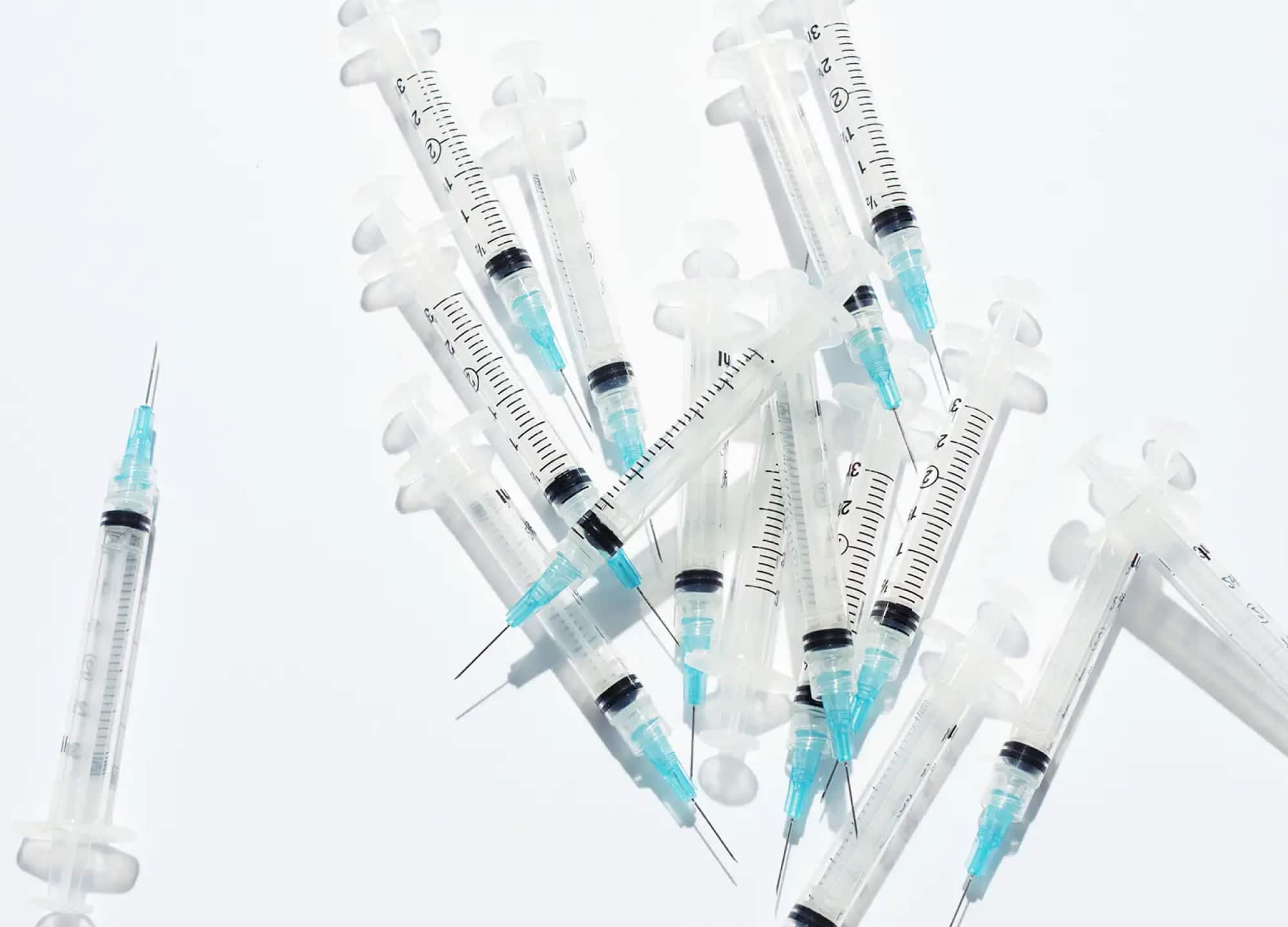According to a report published by the American Society of Plastic Surgeons, there were more than 7.4 million botulinum toxin type A injections and 2.6 million soft-tissue filler injections performed in 2018—and those numbers are only expected to have risen since. Not only does the demand for injectables continue to grow, but the expansion of new formulas is evolving too. From toxins that last impressively long to fillers made for sensitive skin, these next few years are expected to be exciting for cutting-edge noninvasives. We spoke to the experts about what makes these products different from the others and why we should be excited about them.
New Neurotoxins Expected in the Next Few Years
Daxibotulinum toxin (or DAXI) by Revance
DAXI, a new botulinum A toxin for glabellar wrinkles, is developed by Revance and is not yet approved in the U.S. or any other country. “What sets this toxin apart from the rest is that studies have indicated that at the injected dose, the duration is longer than [that of] the current market botulinum toxin dosings,” says Dr. Joely Kaufman, a board-certified dermatologist in Coral Gables, Florida. “DAXI has a proprietary peptide [that] differs from our currently available botulinum type A toxins.”
According to Dustin Sjuts, chief commercial officer at Revance, DAXI is a next-generation neuromodulator product that’s anticipated to launch following a U.S. Food and Drug Administration (FDA) approval, expected to happen in the latter part of this year. “DAXI is the first and only neuromodulator product [that] combines a proprietary stabilizing peptide excipient with a highly purified botulinum toxin that does not contain human or animal-based components,” says Sjuts. Dr. Sapna Palep, a board-certified dermatologist in New York City, is also excited about the release of DAXI, for multiple reasons. “It’s taking the longevity of neuromodulators from 12–16 weeks to an average of 24 weeks,” says Dr. Palep. “[The claim is] a response rate of 95%, which is impressive.”
Bonti botulinum toxin by Allergan
Bonti is the new toxin being developed by Allergan. “This product should have an extremely quick onset of action [within 24 hours] but have a short effect, lasting two to four weeks” says Dr. Joshua Zeichner, a board-certified dermatologist in New York City. “It will be a great option for first-timers wanting to try out a treatment and can also help people who need a last-minute touch-up before a big event.”
Related: Injectable Bruises? Been There. Here’s How to Handle Them Without Hiding Out.
New Dermal Fillers Expected in the Next Few Years
Juvéderm Volite
Available only in Europe and Canada, Juvéderm Volite is not a dermal filler but rather an injectable treatment intended to improve skin quality for up to nine months. Volite contains skin-conditioning hyaluronic acid (HA) gel, to help reduce the appearance of fine lines while also helping the overall tone and texture of the skin itself. The main goal for this treatment is to help make the face look more hydrated rather than diminish the appearance of wrinkles or add volume to the face. Not only is Volite used to hydrate the skin thanks to HA’s high water-binding capacity, but it also helps increase overall elasticity too. Word from Allergan is that we’ll have to wait until 2021 for this product to hit the U.S. market.
Juvéderm Volux
Juvéderm Volux is another hyaluronic acid (HA)-based dermal filler designed to replace lost facial volume. Volux is denser than many fillers on the market—it’s made to mimic bone—and creates a more lifted look. Because the consistency of the product is so dense, it’s often used in the jawline and chin area, to sculpt the area.Volux isn’t available in the U.S. just yet, and like Juvéderm Volite, most likely won’t be available until 2021.
ProfHilo
ProfHilo is a hyaluronic acid (HA) treatment that helps with skin laxity, and it’s free of 1,4-butanediol diglycidyl ether (BDDE). BDDE is a liquid, hygroscopic in nature, that links the HA chains to prevent them from being broken down by the body. ProfHilo is unique because it’s able to remain stable and effective without BDDE. And while BDDE is safe in small doses in dermal filler, the fact that ProfHilo is BDDE-free really appeals to those consumers who are cautious of having synthetic chemicals used in their dermal fillers. It also hydrates and can improve elasticity in the skin, leading to a firmer, more youthful appearance. The injectable is currently available only in Europe and isn’t expected to launch in the United States until next year.
New Dermal Fillers Launched in 2020
Restylane Kysse by Galderma

Officially approved by the FDA in April 2020, Restylane Kysse is a new hyaluronic acid filler developed by Galderma that is indicated for the lips and surrounding wrinkles. It incorporates the same XpresHAn technology as Restylane Refyne and Defyne, which gives the filler better flexibility in the skin to allow for natural movement and contains lidocaine to mitigate discomfort during the injection. The cross-linking of the hyaluronic acid gel in Kysse has also been specifically developed to minimize swelling while producing results for up to a year. (For comparison, Restylane Silk, the other lip filler in the Galderma family gives a plumper pout for up to six months). “In clinical trials, Kysse was shown to give long-lasting results for up to 48 weeks,” says Dr. Zeichner.
If you have sensitive lips or want a more subtle outcome than you may be seeing from other fillers, you’ll want to keep an eye out for when Kysse becomes available in your doctor’s office later this year.
Related: 8 Dermatologists Say These Are Must-Dos Before Any Injectables Appointment
RHA Collection by Revance

Teoxane Resilient Hyaluronic RHA fillers, the only fillers indicated for dynamic wrinkles and folds, launched in the U.S. in the spring of 2020 and became available in provider offices in the fall. The line of hyaluronic acid dermal fillers are designed to treat wrinkles, in addition to volume loss, in specific areas of the face, such as the perioral (around the mouth) or periorbital (around the eyes) while also rehydrating the skin and improving skin quality. “There are several products approved for use in different parts of the face, such as the smile lines on the lips,” says Dr. Zeichner. “The products use a specialized cross-linking technology designed to give longer-lasting results and to maintain its shape even in areas of high movement of the face.” What sets this technology apart involves three things: a long-chain HA that has high molecular weight, to provide tissue structure, hydration, and viscoelasticity; a gentler process to preserve more HA long chains; and the ability to support natural movement within the skin.











